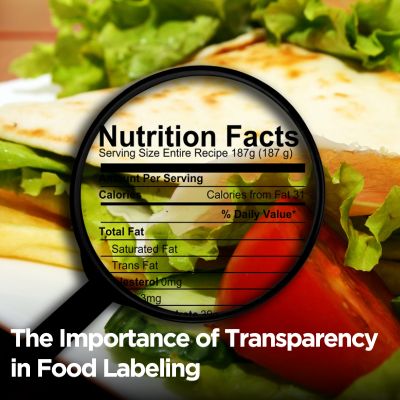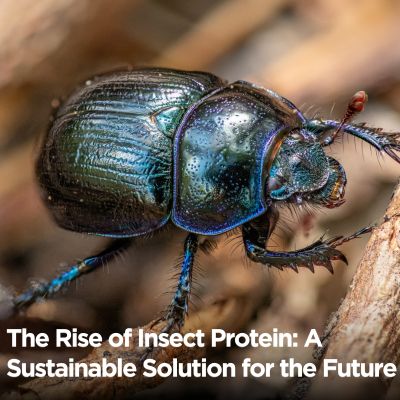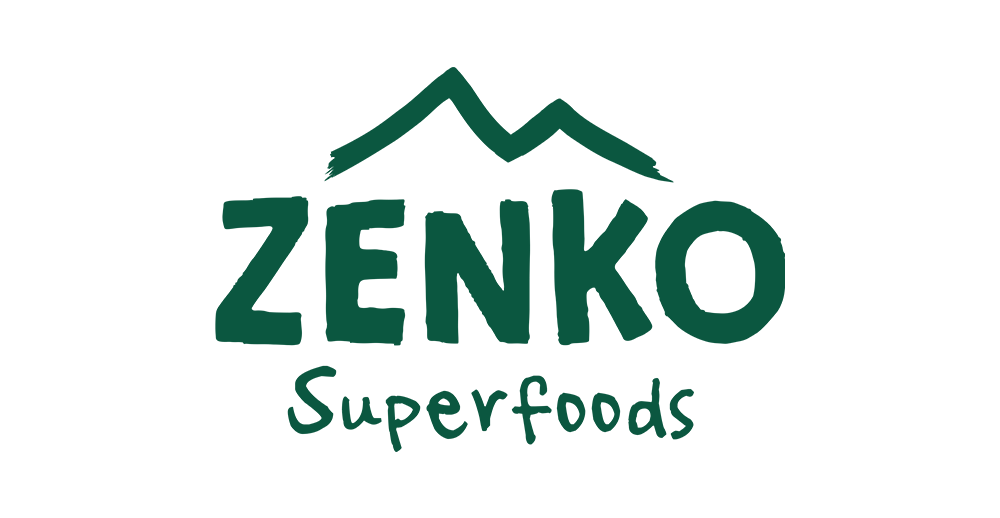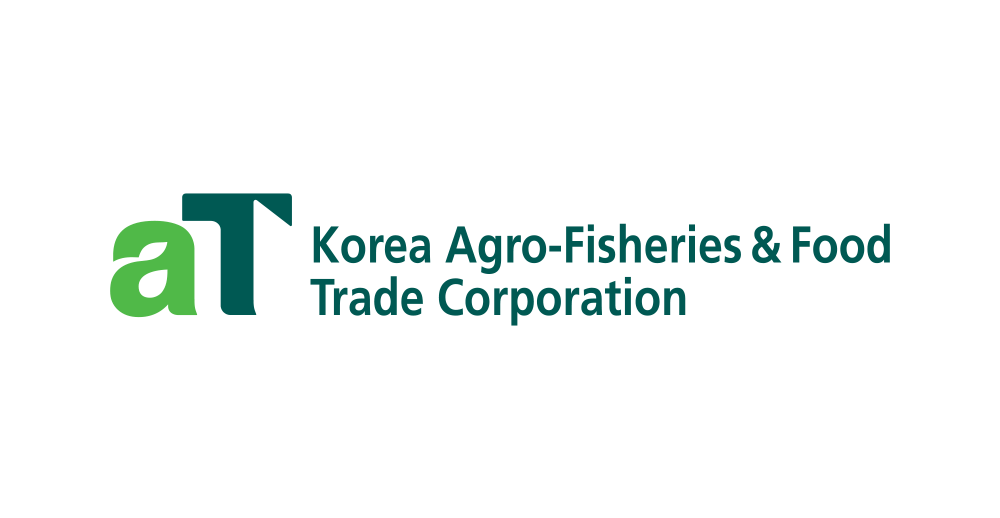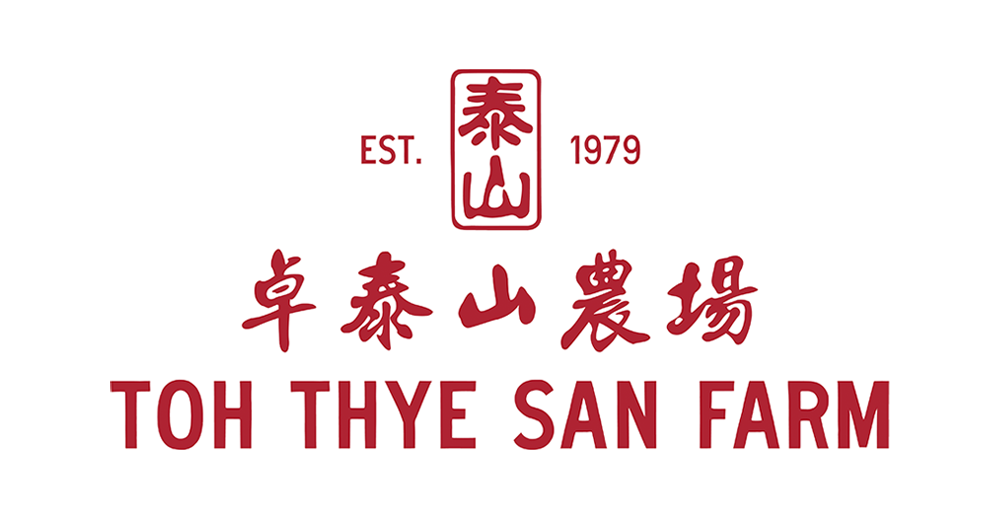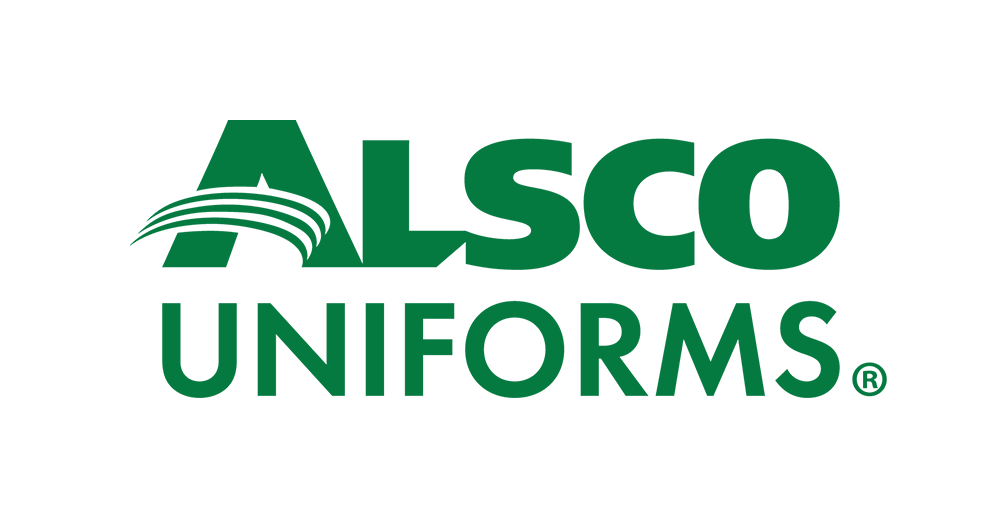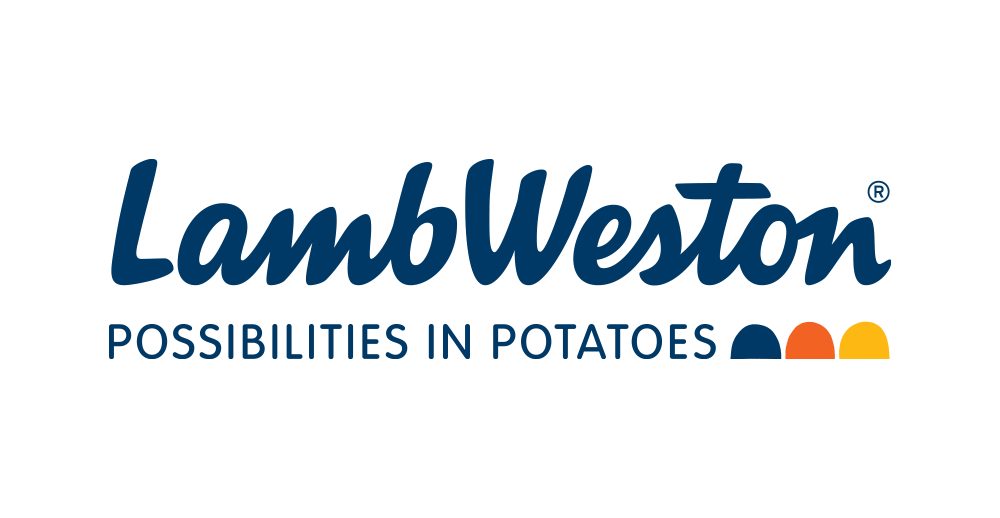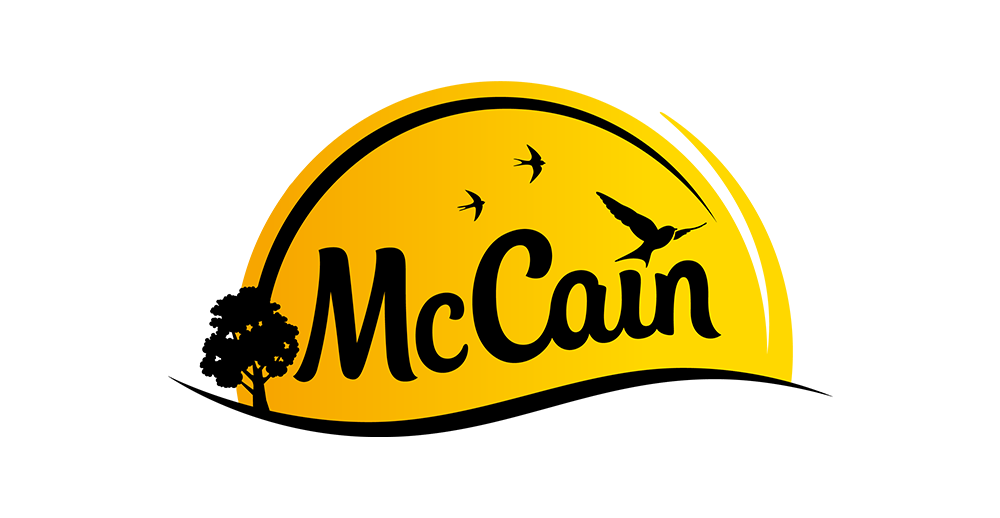The COVID-19 pandemic was a wake-up call for food supply chains worldwide, exposing many overlooked vulnerabilities.
Now, in 2025, we’ve come to understand that a resilient food supply chain isn’t just about bouncing back from disruptions, but about creating systems that can withstand unexpected shocks, adapt quickly, and keep food moving even when the world feels uncertain.
The pandemic exposed the dangers of overreliance on global interdependency and the fragility of labor forces. Supply chain bottlenecks, transportation delays, and labor shortages became daily realities, making it clear that a more agile and diversified approach is needed.
These experiences showed that the future of food systems needs to include strategies for rapid response, increased flexibility, and stronger regional networks.
Looking ahead, the focus is on building systems prepared for disruptions and operating smoothly during uncertain times.
This article will look into the lessons learned from the past few years, solutions that are helping to strengthen food systems, and the outlook for creating a resilient food supply chain that can face future challenges.
What COVID-19 Revealed About Food Supply Chain Vulnerabilities

The COVID-19 pandemic exposed significant vulnerabilities in global food supply chains, revealing how interconnected and fragile the system had become.
Countries closed borders, imposed export bans, and limited transportation, severely disrupting food flows. Labor shortages, especially in agriculture and food processing, further complicated the situation, leading to delays, disruptions, and increased prices.
One of the most noticeable impacts was on perishable goods. With transportation and labor forces disrupted, farmers could not get their products to market in time, resulting in spoilage and waste.
For example, in the United States, COVID-19 led to meatpacking plant shutdowns due to worker infections, causing significant disruptions in the meat supply chain.
According to the USDA, from March 1, 2020, to February 1, 2021, approximately 59,000 meatpacking workers contracted COVID-19, and several plants were forced to scale back production or temporarily close.
Similarly, Singapore’s dependence on imports highlighted how vulnerable small nations are to disruptions in global food supply chains.
With limited domestic agricultural production, Singapore heavily depends on imports, and when global supply chains were interrupted, food availability became a concern.
The government responded by expanding efforts to localize food production, investing in urban farming, and improving resilience strategies.
In addition to directly impacting food availability, the pandemic also raised concerns about food safety and access inequality.
Disruptions in the supply chain led to concerns about the safety of food handling practices, especially in regions where sanitation protocols were challenging to enforce.
The FAO noted that maintaining food safety standards became challenging as factories and distribution centers faced shutdowns or reduced operations.
The pandemic highlighted the importance of supply chain resilience, emphasizing the need for flexible and adaptable systems to sudden shocks. Food systems must also ensure food safety throughout production and distribution, even under extreme conditions.
Addressing these challenges is important for food system recovery, with organizations like the USDA and FAO advocating for stronger local supply chains and investments in technologies like blockchain to enhance safety and efficiency.
The disruptions also revealed the inequality in food access. The most vulnerable populations, including low-income families and those in rural or underserved areas, suffered disproportionately during the pandemic.
Access to food became a daily challenge for many, worsening food insecurity and stressing the global need for more equitable food systems.
These experiences have changed how we think about manufacturers and food supply chain structures. Going forward, food systems must be efficient, resilient, decentralized, and capable of adapting to future disruptions.
Core Strategies for Building Resilient Food Supply Chains
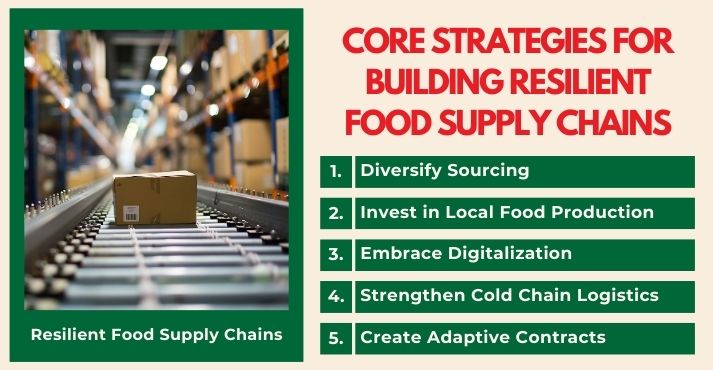
Building resilient food supply chains requires a balanced approach that combines diversification, digital innovation, and local support. Here are several strategies that can help strengthen food systems in a post-pandemic world:
1. Diversify Sourcing
Reducing dependence on imports from one region helps minimize the risks of global disruptions. Diversifying sourcing ensures that if one region faces a crisis, the impact on global food availability is minimized.
Supporting regional suppliers and promoting local food networks also enhances the security of the food supply. The food supply chain becomes less vulnerable to global disruptions by sourcing from various local producers.
For example, the EU’s Farm-to-Fork strategy promotes sustainable and regional sourcing practices to reduce dependency on non-local suppliers while supporting local agricultural growth.
This strategy ensures food can reach consumers even when global logistics are disrupted.
2. Invest in Local Food Production
Urban farming, vertical farms, and agroecology are important solutions for boosting local food production. These practices can increase food availability close to urban centers, reducing transportation time and vulnerability to supply chain disruptions.
Supporting local agriculture through government incentives and partnerships with technology providers can help communities become more self-sufficient.
For example, the Singapore government has significantly invested in urban farming to reduce import dependence and enhance food security.
Local production initiatives, such as vertical farming and hydroponics, are part of Singapore’s resilience strategy. This move towards localized production helps buffer the country from global supply chain shocks.
3. Embrace Digitalization
AI, blockchain, and IoT technologies can significantly enhance food supply chain visibility and responsiveness. By enabling real-time tracking of inventory, shipments, and demand, digital tools provide valuable data to adjust to market changes quickly.
Blockchain, in particular, offers transparency and security, ensuring the integrity of food safety across the entire supply chain.
AI-driven demand forecasting has also become important in post-pandemic logistics, helping companies predict and manage supply chain disruptions before they occur.
4. Strengthen Cold Chain Logistics
Cold chain logistics are essential for preserving the quality and safety of perishable goods. Investing in advanced refrigeration systems, better storage facilities, and more efficient transportation methods helps prevent spoilage and reduce waste.
A strong cold chain ensures that products like dairy, meat, and vegetables can be safely transported over long distances without losing quality.
5. Create Adaptive Contracts
Flexible contracts are essential for responding to sudden disruptions. Companies can quickly adjust terms related to delivery times, prices, and supply volumes during crises by building contingency clauses that account for unforeseen circumstances.
These adaptive contracts will reduce vulnerabilities during periods of high uncertainty and ensure continued operation in the face of unexpected events.
For example, the United Nations Food Systems Summit has emphasized the importance of creating adaptive agreements between suppliers, manufacturers, and retailers to withstand global shocks, focusing on flexibility and crisis-proof food systems.
Flexible contracts can include provisions for price adjustments, delays in supply, and alternative sourcing, helping to maintain continuity during crises.
These strategies can help mitigate risks, improve food safety, and ensure a steady food supply.
By focusing on supply chain risk management, investing in sustainability in agriculture, and embracing tech-enabled supply chain solutions, the food industry can build systems that are resilient, adaptable, and ready for future challenges.
Collaboration and Policy as Key Enablers
Building resilient and crisis-proof food systems requires coordinated efforts across public, private, and community sectors. Collaborative frameworks and targeted policies are essential to address vulnerabilities and enhance sustainability in food supply chains.
Public-private partnerships help make food systems more resilient. By combining resources and expertise, these collaborations can support innovation, improve infrastructure, and help ensure food security.
For example, the World Economic Forum’s Food Innovation Hubs initiative brings stakeholders from various sectors together to support sustainable food systems through innovation and technology.
Regional cooperation is vital for addressing transnational food security challenges. The Association of Southeast Asian Nations (ASEAN) has emphasized the importance of cross-sector collaboration to enhance food security and nutrition, advocating for coordinated approaches involving trade, finance, and transport sectors.
Similarly, the European Union’s VISION4FOOD project aims to enhance the sustainability and resilience of EU food systems through innovative governance models and cross-regional knowledge transfer.
National governments, non-governmental organizations (NGOs), and local communities are essential for crisis planning and response.
In Singapore, the Singapore Food Agency (SFA) has implemented a multi-pronged approach to safeguard food security, including diversifying import sources and building local production capabilities.
This strategy aims to reduce import reliance and enhance resilience against global supply chain disruptions.
In the United States, the Department of Agriculture (USDA) has awarded over $270 million through the Resilient Food Systems Infrastructure (RFSI) program to build resilience across the middle of the food supply chain and strengthen local and regional food systems.
Decentralizing food distribution networks can mitigate risks associated with centralized supply chains. By promoting local production and distribution, communities can reduce their vulnerability to global disruptions.
These decentralized systems help create more adaptable and sustainable crisis-proof food systems in the face of unforeseen challenges.
In short, collaboration between public and private sectors, regional frameworks, and local communities is essential for building resilient, sustainable food systems. These efforts help create food supply chains that adapt and withstand future crises.
Case Studies: Resilience in Action
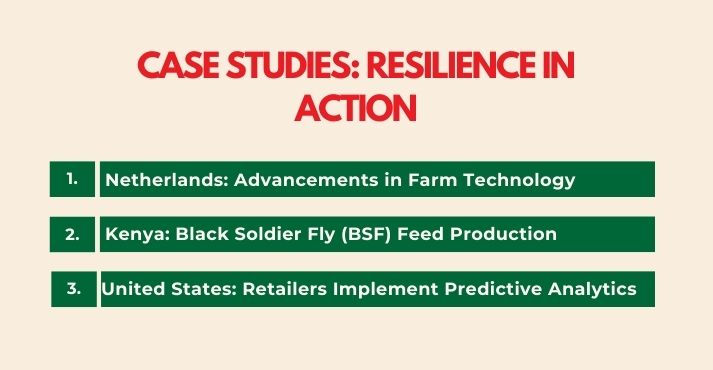
The pandemic revealed the vulnerabilities in global food supply chains, leading many organizations to innovate and strengthen resilience. Below are case studies that showcase real improvements made post-pandemic:
1. Netherlands: Advancements in Farm Technology
The Netherlands continues to lead in agricultural innovation, especially in precision farming and automation. Dutch farmers are using more technologies such as AI-driven crop management, autonomous tractors, and IoT sensors to optimize production and minimize waste.
For instance, Vermuë Arable Farming BV has integrated the AgBot T2 traction robot to enhance efficiency and reduce environmental impact.
Additionally, the AI for Agro-Food lab, a collaboration among Dutch universities and industry partners, focuses on developing sustainable agricultural systems supported by artificial intelligence.
2. Kenya: Black Soldier Fly (BSF) Feed Production
Kenya has turned to Black Soldier Fly (BSF) farming as a sustainable solution for animal feed production. BSF larvae are rich in protein and can be produced locally, reducing reliance on imported feed and addressing waste management issues.
Projects like Project Mila in Mombasa use BSF larvae to recycle organic waste into high-quality fish feed, benefiting the environment and local aquaculture.
Furthermore, organizations such as ICIPE and Black Soldier Fly Kenya provide starter stock and training to farmers, promoting the adoption of BSF farming across the country.
3. United States: Retailers Implement Predictive Analytics
US retailers like Walmart and Kroger now use predictive analytics to optimize inventory management and streamline supply chain logistics. Walmart uses AI and machine learning for demand forecasting, ensuring timely restocking and reducing waste.
Similarly, Kroger uses AI to track the shelf life of perishable goods, improving product availability while reducing waste from spoilage. These advancements in supply chain digitalization have improved efficiency and customer satisfaction.
Preparing for the Next Disruption
Global food supply chains face growing risks, so it’s important to be ready before a crisis happens. Instead of reacting after problems arise, companies and governments are moving towards proactive planning.
Stress testing models simulate scenarios like port shutdowns, cyberattacks, or severe droughts to expose weak points and prepare targeted responses.
Scenario planning builds on this by mapping out possible challenges, like trade issues or climate shocks, and preparing solutions in advance.
Having backups in place also helps. This includes using multiple suppliers, keeping emergency stock, and improving cold chain infrastructure to keep fresh food safe during delays.
New threats like climate change and cyber risks can cause major disruptions. Some supply networks now use blockchain in logistics to track products and prevent tampering, making systems more secure and transparent.
To stay ready, food systems must continue investing in new solutions, strengthening local supply options, and staying flexible. Preparing now makes it easier to manage the next significant disruption.
Frequently Asked Questions (FAQs)
1. What does a resilient food supply chain mean?
A resilient food supply chain can anticipate, respond to, and recover from disruptions in a way that ensures consistent food availability.
It is built to withstand shocks, such as extreme weather or pandemics, while maintaining operations and minimizing waste. The goal is to keep food accessible, safe, and affordable even during times of crisis.
2. What are the main causes of food supply disruptions?
Various factors, including labor shortages, transportation delays, natural disasters, pandemics, and geopolitical tensions, can disrupt food supply chains.
Each of these challenges can slow down production, limit access to inputs or markets, and ultimately affect the availability and cost of food.
3. How can local food production improve resilience?
Local food production helps shorten supply chains, making them more agile and responsive to change. It reduces dependence on imports and long-haul transportation, which can be vulnerable during crises.
By sourcing food closer to consumers, local systems enhance food security and improve the ability to adapt to unexpected disruptions.
4. What technologies are used to build resilient food supply chains?
Technologies like blockchain, AI-driven forecasting, IoT sensors, digital twins, and cloud logistics platforms are used to strengthen food supply chains. These systems enhance traceability, improve demand prediction, and offer real-time visibility across operations.
5. Which countries are leading in food system resilience?
Countries like the Netherlands, Singapore, and the United States are leading the way in food system resilience.
The Netherlands uses high-tech agriculture and smart logistics, Singapore focuses on local food innovation and vertical farming, and the US invests in digital infrastructure and supply chain optimization.

